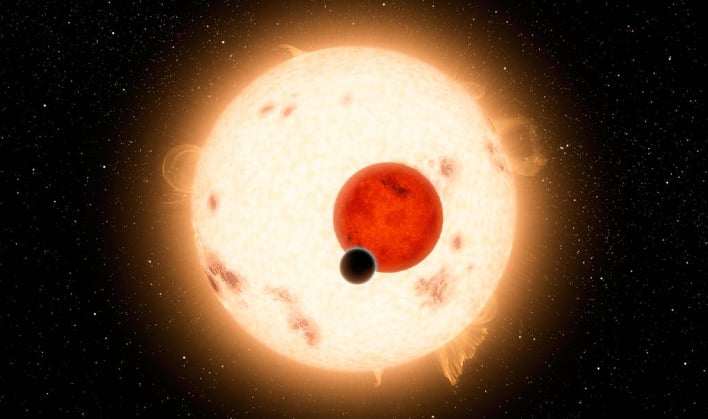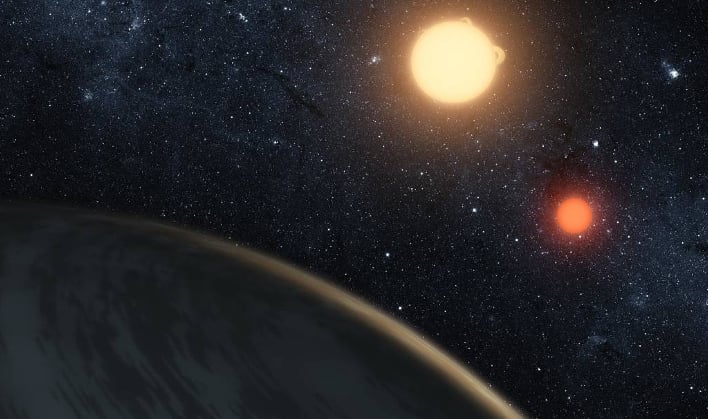A Rare Planet With Two Suns Like Tatooine Has Been Discovered Via Unusual Methods

If someone were to mention a planet with two suns, Star Wars fans may recall a scene where Luke Skywalker watches a double sunset on his home planet of Tatooine. However, one does not have to think in terms of science fiction when it comes to such a planet. Kepler-16b, which is 245 light-years from Earth, was first discovered using the now-defunct Kepler space telescope 10 years ago and had not been seen since. But now a group of astronomers in France have been able to once again detect the rare planet utilizing a ground-based telescope.
Astronomers using the Observatoire de Haute-Provence in southeast France were able to detect Kepler-16b, an exoplanet that exists in a binary star system. The group used a 193 cm telescope while using the radial velocity method, in which astronomers observe a change in the velocity of a star as a planet orbits about it, and the planet moves towards and away from the observer. The group recently published the results of their study in the Monthly Notices of the Royal Astronomical Society.
The fact that astronomers were able to detect Kepler-16b using a ground-based telescope and the radial velocity method is important in that it demonstrates it is possible to detect circumbinary planets while using more traditional methods. This means that future discoveries of similar planets is possible at a lower cost than by using space-based observatories.

Triaud said that the planet may have formed far away from the two stars, and then moved inward in a process called disc-driven migration. Alternatively, Triaud suggests astronomers may need to revise their understanding of the process of planetary accretion.
Dr. David Martin, from the Ohio State University, explains, "Circumbinary planets provide one of the clearest clues that disc-driven migration is a viable process, and that it happens regularly."
While other planets have been found in binary stars systems, of the 2,662 exoplanets that were found by the Kepler Space Telescope during its mission, only 12 orbit a close pair of stars. Hopefully as astronomers continue to use the method that helped them detect Kepler-16b, it will lead to the discovery of more of these Tatooine type planets.
Top Image Courtesy of NASA

